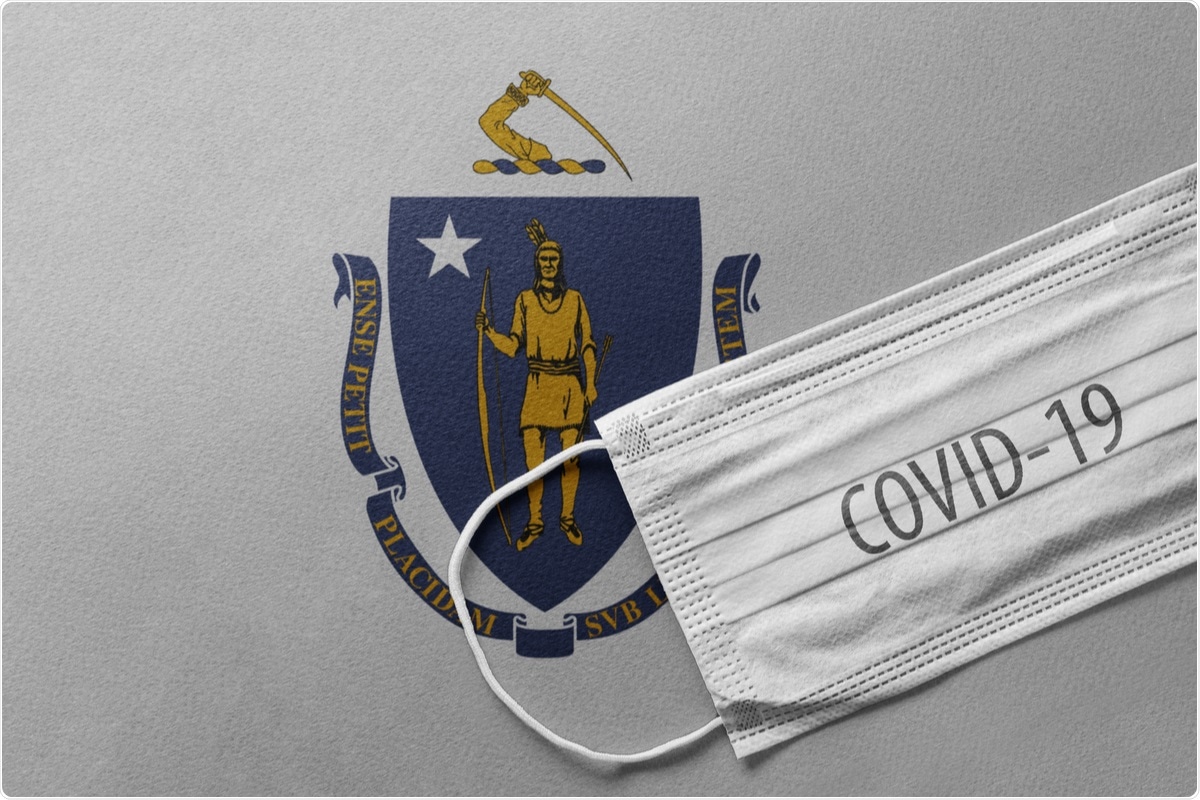Newborn screening (NBS) was first used to measure the seroprevalence of the human immunodeficiency virus (HIV) in the late 1980s. This method is useful in monitoring severe acute respiratory syndrome coronavirus 2 (SARS-CoV-2) infection in the absence of symptomatic disease.
 Study: Trends in SARS-CoV-2 seroprevalence in Massachusetts estimated from newborn screening specimens. Image Credit: Simfalex/ Shutterstock
Study: Trends in SARS-CoV-2 seroprevalence in Massachusetts estimated from newborn screening specimens. Image Credit: Simfalex/ Shutterstock
Monitoring outbreaks of new diseases remains a challenge for disease surveillance networks. NBS programs serve as a source of such information. NBS programs collect infant dried blood spot specimens at centralized clinical laboratories where they are tested for markers of treatable genetic disorders. These infant blood specimens harbor maternal immunoglobulin (Ig)G antibodies that cross the placenta; hence, these reflect maternal exposure to infectious agents.
The study
A new study published in the medRxiv preprint* server reported findings, addressing questions on the incidence and spread of SARS-CoV-2 infection, from a retrospective, de-identified and systematic survey of SARS-CoV-2 seroprevalence among childbearing women in Massachusetts.
The study utilized data generated from newborn screening (NBS) specimens. Women whose infants’ dried blood spot (DBS) specimens had completed routine newborn screening were included. DBS specimens arriving at the NBS screening program in March of 2019 served as the controls and DBS from November 4, 2019, through December 31, 2020, were the study samples.
In this study, human monoclonal immunoglobulin (Ig)G antibody cross-reactive to SARS-CoV-2 was prepared from CR3022 variable genes expressed from plasmids. The receptor-binding domain (RBD) of the Spike protein was expressed using HEK-293F cells and prepared.
Results
RBD protein-specific IgG antibodies were detected in the DBSs residues of the Massachusetts NBS program by an adaptation of a previously described enzyme-linked immunoassay (ELISA) designed for serum.
Seropositive rates from a population of anonymized newborn DBS were measured in a subset of residual DBS – from a period believed to significantly pre-date the COVID-19 outbreak. The low positive controls depicted IgG concentrations significantly above the mean of the tested specimens and all above the values for the tested specimens.
There were 1,817 presumed seronegative specimens from March 2019, of which seven (0.39%) were seropositive for SARS-CoV-2. While among the 72,117 study specimens, 1,261 (1.75% state-wide) were seropositive and 45 seropositive individuals were from November and December 2019. Of the 29 seropositive specimens from July 2020, the average inhibition was 57%, whereas of the available 45 specimens from November and December 2019, the average inhibition was 1.45%, confirming that most seropositive individuals from 2019 were false positives.
Meanwhile, the state-wide monthly seroprevalence in early November 2019 was 0.03%, with a 90% credible interval (CI) of 0.00-0.11%—which remained low until May 2020. After that, the seroprevalence rose to 1.47% following sustained SARS-CoV-2 transmission in spring and plateaued at approximately 2% beginning July 2020, reflecting decreased transmission in summer months, owing to the implementation of preventive measures. Meanwhile, the estimate for seroprevalence for December 2020 was 2.15%.
State-wide trends showed similar qualitative results. Overall seropositivity varied considerably across the state; however, cities with high seroprevalence exhibited similar qualitative trajectories to overall state-wide trends.
While the widths of credible intervals also varied, reflecting uncertainty due to smaller sample sizes for some cities. For instance – the estimate for seroprevalence in Boston was 0.05% (90% CI [0.00, 0.17]) in November 2019, which rose to 3.56% at the end of 2020—which was slightly higher than that for the state. Additionally, modeling time continuously yielded similar qualitative trends.
Good qualitative consistency was elicited by seroprevalence levels and MAVEN cumulative incidence trajectories from 2019-2020. However, there was a divergence between the curves at the end of 2020. This implied that the seropositivity in the heel stick cohort did not rise as sharply as the cases during the winter resurgence. The findings depicted a deviation between the DBS data and multiple other sources of SARS-CoV-2 surveillance towards the end of the sampling timeline.
On examining the community-level factors associated with increased seropositivity, it was found that the incidence of seropositivity among the non-Hispanic Black and Hispanic or Latino increased in several cities and towns, including Brockton, Springfield, Everett, Chelsea, Lynn, and Lawrence. Therefore, it was suggested that certain additional sociodemographic variables warrant further study to characterize their association with seropositivity.
Conclusion
The present study provides a strategy for systematically evaluating and estimating the population-wide cumulative incidence of SARS-CoV-2 by assessing state-wide and overtime distribution of maternal antibodies. It was stated that NBS could serve as a readily available data source that is most useful for informing cumulative incidence estimates in areas where widespread infection testing is still unavailable or remains heavily biased.
*Important notice
medRxiv publishes preliminary scientific reports that are not peer-reviewed and, therefore, should not be regarded as conclusive, guide clinical practice/health-related behavior, or treated as established information.
- Ma, K., et al. (2021). Trends in SARS-CoV-2 seroprevalence in Massachusetts estimated from newborn screening specimens. medRxiv preprint. doi: 10.1101/2021.10.29.21265678 https://www.medrxiv.org/content/10.1101/2021.10.29.21265678v1
Posted in: Medical Science News | Medical Research News | Disease/Infection News
Tags: Antibodies, Antibody, Blood, Coronavirus, Coronavirus Disease COVID-19, Enzyme, Genes, Genetic, HIV, Immunoassay, Immunodeficiency, Immunoglobulin, Newborn, Newborn Screening, Placenta, Protein, Receptor, Respiratory, SARS, SARS-CoV-2, Severe Acute Respiratory, Severe Acute Respiratory Syndrome, Spike Protein, Syndrome, Virus

Written by
Nidhi Saha
I am a medical content writer and editor. My interests lie in public health awareness and medical communication. I have worked as a clinical dentist and as a consultant research writer in an Indian medical publishing house. It is my constant endeavor is to update knowledge on newer treatment modalities relating to various medical fields. I have also aided in proofreading and publication of manuscripts in accredited medical journals. I like to sketch, read and listen to music in my leisure time.
Source: Read Full Article
